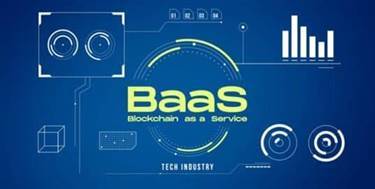These issues have been addressed by Onion Architecture, which defined layers from the core to the infrastructure (Separation of Concerns). It follows the elemental rule by shifting all coupling to the middle (Loose Coupling). Using contracts allows every layer to set its expectations onto the subsequent and couples it to solely what it requires to be.
- For those who are new to Castle Windsor, it is among the greatest IoC container in market today.
- This structure allows higher software testability, maintainability, and dependability on infrastructures corresponding to databases and providers.
- Since the domain adjustments probably the most — right here is the place where you place all the new options, and business requirements — it
- This makes it a nasty selection, for extra
- with ideas much like Hexagonal Architecture,
- Yes, decision about layers in an utility depends upon many elements in a selected situation.
This separation makes the application extra modular and simpler to know. And Application Services are providers made accessible to the outer layers. Additionally, the Onion Architecture relies heavily on the Dependency Inversion principle to supply the interface implementations at runtime. I even https://www.globalcloudteam.com/ have connected Castle Windsor within the pattern project to achieve dependency inversion at run time. For those that are new to Castle Windsor, it is considered one of the finest IoC container in market at present.
Finally, we got the info supply layer the place we take care of communication with other systems. Most purposes retrieve and store knowledge in a database, however this layer additionally consists of different methods like messaging techniques and even third-party functions onion architecture. This layer manages interactions with databases, external APIs, or any infrastructure-related concerns. Dive into the core ideas of software growth that stand strong amidst the rise of Generative AI. Learn how clear requirements, human collaboration, and agile methods form success in tech.
We create a generic repository that searches the supply for information, maps the data from the source to a business entity, and tracks adjustments within the business entity again to the source. Onion Architecture is comprised of a quantity of concentric layers interfacing with one another towards the core that represents the domain. The structure doesn’t focus on underlying expertise or frameworks however the precise domain models. Domain Layer – At the very core is the Domain layer which holds all your domain objects. Please limit yourself by keeping just the properties or definitions inside your domain objects and never any piece of code which talks to database or has some other business functions.
The Clear Architecture — Beginner’s Guide (visual Illustrations)
This means we will use the repository interface in the utility core without understanding the details of how it’s carried out or the place it shops the information. We could have a quantity of repository implementations to save to file, database, or reminiscence. At deeper layers, we define summary interfaces, whereas on the high layer, we give their concrete implementation. By doing this, we are able to maintain our consideration on the area mannequin and reduce our concern about implementation points. We may also use dependency injection frameworks like Spring to link interfaces with implementation at runtime.

technical-oriented providers, e.g. a high-throughput proxy written in a reactive framework. Additional complexity to the build setup and additional learning curve launched by the layered approach pays again throughout development.
Benefits Of Onion Structure:
This is a simple use-case however the true question being asked is why. It may be efficiently used as an alternative alternative to a popular Hexagonal / Ports and Adapters architecture, and as such is predominantly used in the backend, business
We call them layers as a outcome of we often stack them on high of each other like a cake. In abstract, both Clean Architecture and Onion Architecture goal to create a testable, maintainable, and scalable structure for software program. The choice of architecture for a project is dependent upon its specific necessities and characteristics. This structure allows larger application testability, maintainability, and dependability on infrastructures similar to databases and providers. In this layer is where the vast majority of our enterprise logic lives, it carries out the operations to turn A into B, input into output, egg into hen. It achieves this through interacting with the final layer, the Domain Model layer which is the representation of the excessive degree data objects we use.
As talked about above at the beginning of the article, Onion Architecture just isn’t a one-size-fits-all resolution. It has its learning curve and is finest fitted to providers with a transparent area definition. This makes it a bad selection, for extra

clearly outlined within the module construct files. Applicable for big, complicated, and needs to final a very lengthy time sort Projects. Onion structure may appear onerous in beginning however is widely accepted within the trade. It is a robust architecture and allows easy evolution of software program. By separating the appliance into layers, the system becomes more testable, maintainable and portable. It helps simple adoption of new frameworks/technologies when old frameworks turn out to be obsolete.
Area Layer:
Discover the critical steps healthcare providers can take to guard affected person knowledge in opposition to rising cyber threats. From encryption to third-party risk administration, discover ways to construct a strong protection. The utility is separated into layers, each with its own duties and concerns.

It helps builders create purposes which may be more versatile, testable, and easier to evolve over time. In this text, we are going to delve into the key concepts of Onion Architecture and provide an instance folder construction that illustrates its implementation. They encapsulate enterprise logic that doesn’t neatly match right into a single entity within the model. A classic instance is BankAccount (entity) and FundsTransferService (which operates on two accounts at a time). According to traditional architecture, all of the layers are interconnected and considerably depending on one another.
Layers Of The Onion:
It depend upon the capacity/diversity they wish to serve, the need in hand and the aim of university. It may be very totally different in details (naming and partitions) throughout the globe but the core and intent is at all times identical. 1) Interfaces is encompass parts which are responsible for interacting with user(a actual endpoint user or a distant machine), net mvc controller, web view object, distant facade for instance. In this text, we’ll learn to implement Onion Architecture rules, emphasizing layered structure for ASP.NET Core. We have already discussed the advantages and challenges this architecture has addressed. These have become the reasons onion structure has turn into so in style among the techies.
We also create a generic repository, and add queries to retrieve knowledge from the supply, map the data from knowledge supply to a business entity, and persist changes in the enterprise entity to the info supply. Onion Architecture, launched by Jeffrey Palermo, emphasizes the independence of the appliance’s core enterprise logic from exterior issues like databases, consumer interfaces, or frameworks. The architecture is structured in concentric layers, the place every layer has a particular responsibility and dependency move, resembling layers of an onion. The area layer lies in the heart of the Onion Architecture, representing the enterprise and behavioral objects.
The advantages aren’t simply restricted to free coupling but different features like Separation of concern and domain mannequin strategy makes it an superior architecture to observe. In the same means, Layers in an software relies upon upon the need and scope. Sometime architects used to outline the name of layers as per their philosophy and convention adopted within the organization. But the code idea of getting salable, maintainable and fulfilling the functional and non-functional requirements in hand, stays at all times same.
the dependency direction always goes from the skin to the inside, never the other way round. During my Engineering profession, I’ve labored on multiple projects using totally different architectural styles. Domain Entities are the basic building block of Domain-Driven Design and they’re used to mannequin concepts of your Ubiquitous Language in code. Entities are Domain concepts that have a singular identification in the issue area. It is meant to be independent of specific applied sciences like databases or web APIs. Order is an entity and has attributes like OrderId, Address, UserInfo, OrderItems, PricingInfo and behaviour like AddOrderItems, GetPricingInfo, ValidateOrder, and so on.







